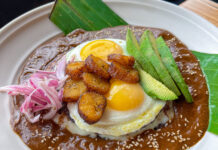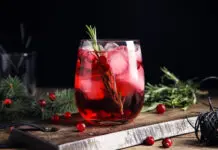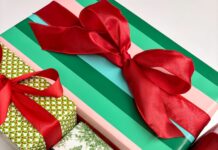In Little Rock, it’s called the River Market District. In San Antonio, it’s River Walk; and in Fort Lauderdale it’s just plain Riverwalk. What these urban waterfront districts have in common is that their development into centers of commerce, entertainment and recreation have been instrumental in the revitalization of downtown areas that were languishing in previous decades as more and more of their host cities’ population migrated to spacious suburbs.
Meanwhile in Tulsa, the Arkansas River basin snakes through 11 miles of city and 42 total miles in the greater regional metro corridor, with only occasional water flow, notably little sporting activity and only small patches of shoreline development. Kayakers no longer use the Tulsa Wave. The Blair Fountain sits dormant.
In some ways, Tulsa’s slow pace in maximizing use of the river is driven by historic and outside factors. The city sprung up more around the railroad than it did the river. And being a prairie waterway, the environmental restrictions and requirements for developing along the river dwarf those of most other urban waterways. But economics, bureaucracy and suburban apathy have also played a role in deterring maximizing usage of the river.
Still, the future of the Arkansas River in Tulsa is not bleak, and it’s not gone from the agendas of regional civic leaders. Progress is coming to the shores of the world’s 45th longest river where it vivisects Tulsa County. But exactly when riverfront development happens and exactly what form it takes remain questions with ambiguous answers.
Water Works
“One major differentiating factor in regards to river development here versus other communities is that their rivers have water in them,” says Mike Neal, president and CEO of the Tulsa Metro Chamber. “The disadvantage to the Tulsa region is that frequently there is no water in the river. It’s hard to develop without water regularly in the river.”
Water flow is key to subsequent phases of river development.
“People have a strong desire to come to the river and enjoy the ambiance,” says Rich Brierre, executive director of the Indian Nations Council of Governments (INCOG), the Tulsa regional planning organization. “Whether it’s a beach, a lake or a river, the waterfront is something that attracts people.”
Currently, the flow of water is controlled in large part by Keystone Dam and to a lesser extent by the Zink Dam in Tulsa proper. According to local authorities, renewing the river through Tulsa as an actual flowing waterway would require substantial improvements to the Zink Dam and the construction of two additional low-water dams in Sand Springs and in Jenks. Just under $6 million was pledged from Vision 2025 funding, but that remains far less than what is needed.
“The initial master plan said it would cost $60 million, but current estimates are around $100 million with pedestrian walkways,” says Gaylon Pinc, environmental program manager for Project Management Group, the consultants tasked with implementing Vision 2025 projects.
“The disadvantage to the Tulsa region is that frequently there is no water in the river. It’s hard to develop without water in the river.”
However, while improvements to the Zink Dam are underway and anticipated to continue for another three years, according to Pinc, funding for the new dams remains elusive. In 2007, county voters rejected a small sales tax increase aimed at creating a revenue stream. Local philanthropists had pledged a significant amount of private investment in the plan as well. Details of the vote reveal divided sensibilities when it comes to moving ahead with river development – and the divide was largely geographic.
“It was defeated 52-48,” says Chris Benge, former speaker of the Oklahoma House of Representatives and Tulsa Chamber senior vice president of Government Affairs. “It actually passed in the city but voters in suburban communities rejected it because they didn’t see the benefit to them. The plan was for public money to be used for the three low water dams to keep water in the river. Private investment would then be made in riverfront development.”
According to Pinc, the 2007 vote was also tarnished by misinformation.
“Opponents of the plan claimed that the plan could never get permitted, which was and is just not true,” Pinc says. “The Army Corps of Engineers was involved the whole time. It was their plan. They weren’t going to deny permits for their own plan.”
About a year later, optimism abounded when the state offered a $25 million potential bond to support projects. Leveraging monies from the state and Vision 2025, local authorities were able to pony up matching funds and were to rake in the federal funding needed to get the river infrastructure projects underway.
Then came the recession.
“We had all the matching funds we needed for federal funds and then the economy fell apart and Congress did away with earmarks,” Pinc says.
Brierre said the timing was unfortunate.
“The money was authorized but not appropriated,” Brierre says.
Pinc says that the next phase depends upon what path elected officials choose.
“They could fund the necessary studies without the Army Corps, except the regulatory process,” he says. “Or else they can just wait for federal appropriations to resume. There is a lot of bureaucracy but identifying funding is very important to these projects.”
Brierre says that Tulsa County is moving ahead as best it can, given the dearth of resources. Considerable studies and planning are intrinsic to the Zink Dam improvements.
“There are processes that have to be gone through so that when funding is available, we can move ahead on the two other low water dams,” Brierre says.
Although Benge says Oklahoma’s outlook for federal dollars is not great because of the elimination of earmarks and federal budget constraints, “everyone is being mindful to when federal money comes back, the permitting will be in place to move on.”
Still, even if the entire dam project should be funded tomorrow, the road to completion is a lengthy one. According to Pinc, preparing permits and conducting an environmental impact study would take 12-18 months. It could then be 18 months or more for the process approval. Final design would then take as long as a year. Construction would then take two more years.
“You might add a year to that overall process, and that’s assuming total funding,” Pinc says.
Of course, it’s possible that local and regional funding availability could speed the process.
“Certainly there is the potential to go back to the voters,” says Neal.
In the meanwhile, the river sits with only occasional spotty water flow, not quite dormant, and possessing the potential energy to drive the next phase of Tulsa’s evolution.
On The Shore
In addition to scenery, other cities’ urban waterfront development has something else in common. In general, the shores have become bustling entertainment districts with contiguous properties housing businesses that complement one another. But assuming the infrastructure improvements are made on the Arkansas River in Tulsa, development on the shore is likely to look much different.
“The Arkansas River is very different,” says Brierre. “San Antonio’s River Walk is a very narrow channel. So is the Oklahoma River in Oklahoma City. Our river is one of the largest in the United States and has a wide channel. It’s very different than others. It’s more of a natural setting and I think the public embraces that. What’s eventually done has to reflect the diversity of people’s interests.”
Those interests are reflected in a master plan, crafted in a regional effort, that has a very subjective view of development on the river.
“Vision for development on the river is real fuzzy, in my opinion,” Pinc says.
Instead of a detailed plan including zoning and density recommendations, corridor-exclusive setbacks, unified parking requirements, etc., the plan instead respects different municipalities’ regulations and blends suggestions for open space mixed with various potential development.
“There absolutely would be a component of water recreation,” Pinc says. “We don’t want swimming, but the new low water dams would support fishing, boating and rowing.”
Pinc says there are opportunities for entertainment districts.
Brierre says the master plan envisions development at strategic locations, and includes areas where development is possible and areas of critical mass. However, neither local municipal governments individually or collectively can at this point craft a more cohesive, unified plan – because there are numerous property owners on both shores of the river. Among prominent entities with real holdings or proprietary control of riverfront property are the city and county, River Parks Authority, the Creek Nation, the George S. Kaiser Family Foundation and other private interests. There’s also a designated protected wildlife area. As a result, there are few clear, large contiguous parcels of land available for easy and obvious development.
Of course there has already been some riverfront development and there are some efforts for more.
Tulsa Mayor Dewey Bartlett says that Blue Rose Café is a good example of successful development and partnership between public and private interests.
He says he recently appeared before River Parks Authority and suggested that the RPA, a city-county public trust authority responsible for considerable real estate along the river, pursue other projects similar to Blue Rose.
“I told them that Tulsa can help,” Bartlett says. “We own land at intersections of Riverside Drive and a lot on the west side. We can participate with property and parking. I visualize a situation where the city could provide trolley transportation and maybe run all the way downtown.”
Matt Meyer, RPA executive director, says that different people have different ideas on what “development” means, and he ponders, “How much of the park do we want to pave over?”
"Our river is one of the largest in the United States and has a wide channel. It’s very different than others."
RPA is responsible for arguably the most popular development along the river – the extensive trail system whose development and improvement was funded by the Kaiser Family Foundation. That wildly popular trail system has prompted considerable activity along the river’s shores.
A public plaza at 41st and Riverside, funded in part by major donor QuikTrip, has also been a lauded addition to the corridor.
Other development efforts have met with less success. The City, for example, issued a request for proposals for development of a 100-acre-plus parcel on the west side of the river, and including where city water and street department infrastructure is housed and a private cement plant parcel with an owner willing to sell as part of the deal, Bartlett says. But the handful of proposals received apparently did not pass muster and there has been no additional attempt to develop the location.
“We’re still confident something could happen,” Bartlett says. He adds that he feels the state of the overall economy was the largest obstacle.
Furthermore, Bartlett says that the Kaiser Family Foundation will be announcing plans for an extensive $100 million development on the west side of the river.
“I haven’t seen the plans but I have heard a lot of things,” Bartlett says.
Most residents though would point to the Riverwalk in Jenks as the most polished major development along the river in the region. A large land parcel and city zoning and guidelines spurred the development. Although many Riverwalk businesses have struggled as the recession finally arrived in Oklahoma, others – notably popular restaurants like Los Cabos and Waterfront Grill – have done well and helped breathe life into the riverfront in Jenks.
“It absolutely does help to have other development close to where you’re developing,” says Ben Edwards, project manager for the highly anticipated mixed-use development Village on Main in Jenks. “No development can stand alone.”
Riverwalk, the Oklahoma Aquarium, components of Village on Main as they come online and other development in the area has helped create a critical mass.
“Having a large attraction like the aquarium, then Riverwalk, play into what we’re trying to do… to become a destination: Jenks, America,” Edwards says. “For us, the river plays a big part in that. In the near future when the low water dams are in, it will become a place for people to walk along and enjoy the scenery. We’re building a kind-of town center and people should be able to walk down the street to shops and eventually to the river to enjoy.”
Downstream
Whatever eventually transpires when it comes to development along the Arkansas River in Tulsa might appear far downstream and past a turn or two in the path, but there is a sense of urgency already today.
“If we don’t go forward and get permitting out of the way and prepare for when funding becomes available, we’re likely to lose momentum,” says Pinc. “Data will become aged to the point that it needs to be re-done. I think there is a desire in the public to get something done. People just don’t want to pay for it.”
Bartlett says that failure to continue pursuing riverfront progress would be “very short-sighted.
“I hear it all the time – ‘let’s do something,’” Bartlett continues. “I’m not saying let’s limit development to bars and restaurants. There are all sorts of possibilities. We have to start. We have to keep moving. We can’t wait a year or two. Look at what Oklahoma City has done – they got a couple of backhoes out and built a river.”
Benge sees river potential as part of a larger economic look at Tulsa.
“We have low unemployment; we’ve had a major renaissance in downtown, and millions of dollars have been invested in new roads and highways,” Benge says. “Tulsa has a lot of momentum right now.”























.jpg)







